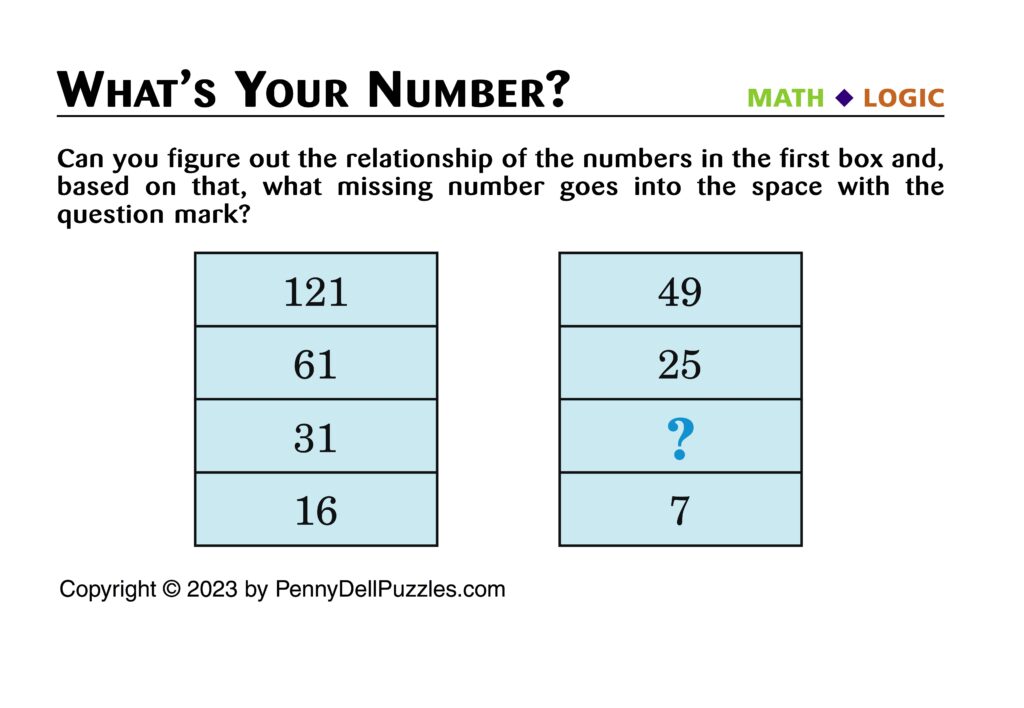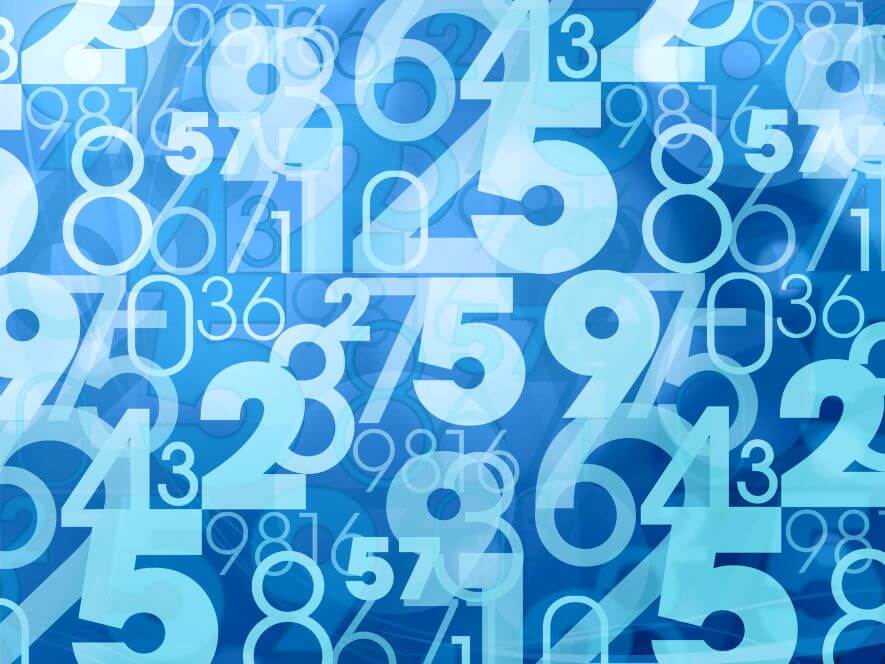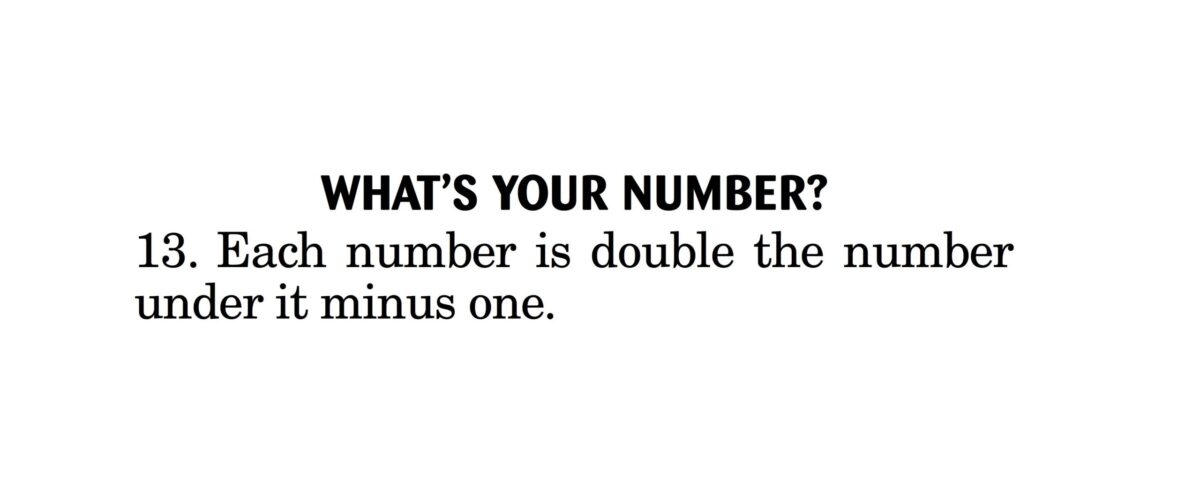Are you a fan of locked-room mysteries, red herrings and whodunnits? As an armchair detective, you’ve probably picked up some clues about the craft by working alongside great fictional detectives like Columbo, Sam Spade and Miss Jane Marple.
Solving mysteries is a good skill to have, even if you use it only to answer everyday riddles like where you put your keys or finding the answer to 29 across in today’s crossword puzzle. But to get really good at solving mysteries, you’ll need to boost your brain power.
Good ways to up your mystery-solving game include:
- Doing puzzles. Having fun with puzzles, like our “What’s Your Number?” brain teaser, is a great way to sharpen your mind and practice looking for clues and making connections that lead you to answers. Puzzles may also improve your concentration, short-term memory and problem-solving ability.
- Focusing on the task at hand. Solving a mystery requires deep concentration. That means carving out time, away from distractions, to focus on the conundrum in front of you. Instead of multitasking, try unitasking to pump up your brain power.
- Taking notes. Jotting down ideas can help you gather your thoughts and sharpen your observational skills. Some of the toughest mysteries (in fiction and in real life) have been solved by a keen-eyed detective noticing a key detail that escaped everyone else.
- Boosting your memory. Ways to keep your memory sharp include getting regular exercise, eating brain-friendly foods like leafy greens, and challenging your mind with activities such as traveling, learning new languages and playing games.
- Getting creative. Using your imagination can help you get out of a mental rut and into a space where you can dream up creative solutions to the mystery or puzzle at hand.
Want to sharpen your mind and your mystery-solving skills? Start with our “What’s Your Number?” brain teaser. This math and logic puzzle requires you to take a close look at two columns of numbers. In the first two rows, the numbers in both boxes are filled in to give you a hint on how to crack the code.
In the second two rows, only the first box is filled in, while the second box contains a question mark. You’ll use the numbers given to figure out the relationship between the numbers in the first boxes and those in the second boxes. Once you have your lightbulb moment, you’ll be able to come up with the missing numbers.

Were you able to solve it? Click here to double check your answer.








Relatively easy, but fun to do.
I loved this! Didn’t see it at first.. came back to it and it clicked.
It took a minute but I figured it out
Got it!
Good puzzle. It helps me to keep my mind Sharp.
Thank hoy.
Why not simply add the numbers to see the 13-7-13-7 pattern?
The answer is 18 not 13. 7+13= 20 7+18=25
I can see how you solved it. But, strangely, I did it a different way and came up with the same answer. I subtracted them across the two columns. 121-49=72, 61-25=36, 31-13=18, and 16-7=9…and all the answers were half of the preceding. 72, 36, 18, and 9.
That’s exactly what I did!
That did take some thought.
I got the answer but I halved the first number and added the remaining number. 49 divided by 2 = 24 +R 1 = 25
I enjoyed that. It hurts when I have to think; once a year I do it, like it or not. I’d like to see more of these.
I figured it another way. 1+2+1= 4, 1+6=7, 3+1=4, 6+1=7…. 4, 7, 4,7 So in the next column:
4+9=13, 2+5=7, ?, 7. So ? =13 because the first row added up to 13.
Pretty easy
It can also be that the number above plus 1 divided by 2 is the next number below
I’m a math teacher, so it was relatively simple…but enjoyed it. I love doing math
The answer I came up with was also 13, but arrived at differently – each number was half the amount of the one above it, rounded.
121/2 = 60.5=61
61/2=30.5=31
31/2=15.5=16
49/2=24.5=25
25/2=12.5=13
13/2=6.5=7
I figured the percent the number on the right was to the number on the left and came up with the same answer.
It was fun , but only because I got it .
These puzzles really made me think! A good challenge, even for a “word” person. Please keep them coming.
12 is the correct answer…not 13.
Using the brilliant ‘Common Core’ principle, first it’s (Easily seen or detected) there’s a pattern where the number below is roughly half of the upper number. CC approves any answer that’s close and in this case….12 should be accepted as well. 😂
I solved it differently: in the first example, the 2nd number is 60 less than the 1st (61), the 3rd is 30 less (31) and the 4th is 15 less (16). So, in the second problem, the 2nd is 24 less (25), the 3rd is 12 less (13) and the 4th is 6 less (7).
I got the right answer, but did it in the wrong way. I thought you were looking for a relationship between the two columns. If you take all but the last digit on the left, multiply that by four, and add the last digit, you get the corresponding number in the right column, except for the last row, which threw me for a loop.
The first number 121 adds up to 13 if you use the first two digits and the last digit. 49 adds up to 13 also. The same is true with 61 and 16 both adding up to the same total as their respective numbers of 25 and 7. Therefore the mystery number could have been 4.
I was looking left to right and found that if you add the digits in 121 (12 +1 = 13) so does 4 and 9 = 13, etc. and 6 and 1 = 7 as do 5 and 2. Ha Ha!
I totaled the digits to identify a patern. In the first colum totals are 4, 7, 4, 7
Therefore following the patern totaling the digits I get 4 + 9 = 13 because 2 + 5 = 7 and 7 is 7. Missing number is 13.
Well, the solution to that one appeared instantly. But then, at 86 yrs old, I like “brain teasers” I can solve occasionally! I’ve had “solitaire” on my phone for years and use it almost every day, mostly for just a few minutes, when I need to be able to focus. I’ve gotten pretty good at the game and can usually figure a way to win the hand, but it’s not about the winning so much as the focus. When my mind is scattered among a dozen things I’m expected to keep doing at the same time, this few minutes of focus is like a mini-meditation for me. My most interesting daily projects are ones that involve some problem-solving, clever work-arounds, or figuring out ways to do things I want to get done but that my old body is no longer capable of.
Here’s my answer:
121 as 1+2+1= 4
61 as 6+1= 7
31 as 3+1= 4
16 as 1+6 = 7
49 as 4+9=13 is 1+3=4
25 as 2+5=7
? = 4
7 as 7= 7
I got it right
Great stuff! Thank you all so much.
Ed C
This was almost too easy. Obvious
Pretty easy. I just needed to actually read the directions (I was comparing the numbers in each of the columns horizontally until I read the instructions. Lol)
1) In first column: 121-61=60; 61-(1/2 of 60)=31; 31- (1/2 of 30)=16;
2) In second column: 49-25=24; 25-(1/2 of 24)=13; 13- (1/2 of 12)=7
So, the answer of missing number is 13.
Good teaser!
1) In first column: 121-60=61; 61-(1/2 of 60=30)=31; 31-(1/2/of 30=15)=16.
2) in second column: 49-24=25; 25-(1/2 of 24=12)=13; 13-(1/2 of 12=6)=7.
So the missing number is 13.
Good teaser!
This was fun!
Thank you.
More please.
My problem was with the fact that I assumed that there was a relationship between the numbers in the first block and the second block.. therefore, when I looked at the number 121, I then looked at how it related to 49. Next, I looked at 61, compared it to 25 etc. I think that the use of two blocks placed side by side is a deliberate attempt to mislead and it was successful.
To solve the problem, I subtracted the two numbers from each number and the answers were: 72, 36, ?, 9. Since the answers were in multiples of 9’s, I knew the missing number was 13. (31-18=13). Can’t explain it well but subtracting that other multiple of 9, being 18…that ? had to be 13!!!
Yes, this was interesting. I enjoyed using my analytical skills in solving these questions. Please keep it coming!
I did it the same way John M. did.
easy
Solved this in less than a minute, but I’m usually good with number puzzles — not so much with word/letter puzzles.
Got it! I really like brain teasers!
I solved it in a different way.
If you look at each of the numbers in the left column, and subtract the corresponding number directly across from it in the right column, you will see the difference/change between those two values. The pattern of “change” is “cut” in half as you move down the columns.
121 – 49 = 72
61 – 25 = 36 (Which is half of 72)
31 – “13” = 18 (Which is half of 36)
16 – 7 = 9 (Which is half of 18)
The next change would be????
8.5 – 4 = 4.5 (Which is half of 9)
If you move to the topside???
241 – 97 = 144 (Which is “double” 72)
As a retired math teacher I especially enjoyed this one.